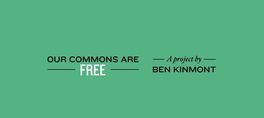Free World Rhythms Workshop
Cloverdale Arts Alliance
In Person Sign Up: [email protected]. Online Version Sign Up: [email protected].
Got Rhythm? Get the Beats of Africa, Bali, and India
Wednesday, March 6, 2024, 7 to 7:45 PM
This workshop is a wonderful way to improve timing skills. Matthew Montfort's book, Ancient Traditions - Future Possibilities: Rhythmic Training Through the Traditions of Africa, Bali and India, is the basis for this world music workshop and has been used by many teachers and musicians around the world, including Reinhard Flatischler, founder of the TaKeTiNa rhythm training process, and Steve Smith, famed rock and jazz drummer.
The workshop is presented in an easy to follow, entertaining yet educational format for all music lovers. African polyrhythms, Balinese kotèkan and Indian classical music were chosen as the source material for the training because these three traditions in combination cover the major types of rhythmic organization used in most of the world's music. Not just for musicians and percussionists, this training can help anyone with a desire to improve their rhythm skills. The workshop is open to all levels, and no musical background is required. Very simple to play percussion instruments will be provided, and participants are free to bring any percussive instrument they enjoy playing.
Rhythm Training Materials
Ancient Traditions - Future Possibilities: Rhythmic Training Through the Traditions of Africa, Bali and India by Matthew Montfort
"You've heard Afro-Pop, sitar, gamelan and world music for years. But do you know what they are and how they work? Better yet, would you like to play those twisted cross-rhythms and melodies? In Ancient Traditions--Future Possibilities, Matthew Montfort, a founding member of the world music band Ancient Future, has put together the book for people who want to dig into world music with both hands. The first section of the book covers traditional music of West Africa, Bali and India with theories and exercises. Wherever possible, Montfort has provided beat counts alongside the standard musical notation so even if you can't read music, you can still learn the rhythms. The last section of the book mixes patterns from different cultures, demonstrating the powerful music these simple exercises can generate." - Richard Kadrey, SAN FRANCISCO CHRONICLE
show less
Cloverdale Arts Alliance
In Person Sign Up: [email protected]. Online Version Sign Up: [email protected].
Got Rhythm? Get the Beats of Africa, Bali, and India
Wednesday, March 6, 2024, 7 to 7:45 PM
This workshop is a wonderful way to improve timing skills. Matthew Montfort's book, Ancient Traditions - Future Possibilities: Rhythmic Training Through the Traditions of Africa, Bali and India, is the basis for this world music workshop and has been used by many teachers and musicians around the world, including Reinhard Flatischler, founder of the TaKeTiNa rhythm training process, and Steve Smith, famed rock and jazz drummer.
The workshop is presented in an easy to follow, entertaining yet educational format for all music lovers. African polyrhythms, Balinese kotèkan and Indian classical music were chosen as the source material for the training because these three traditions in combination cover the major types of rhythmic organization used in most of the world's music. Not just for musicians and percussionists, this training can help anyone with a desire to improve their rhythm skills. The workshop is open to all levels, and no musical background is required. Very simple to play percussion instruments will be provided, and participants are free to bring any percussive instrument they enjoy playing.
Rhythm Training Materials
Ancient Traditions - Future Possibilities: Rhythmic Training Through the Traditions of Africa, Bali and India by Matthew Montfort
"You've heard Afro-Pop, sitar, gamelan and world music for years. But do you know what they are and how they work? Better yet, would you like to play those twisted cross-rhythms and melodies? In Ancient Traditions--Future Possibilities, Matthew Montfort, a founding member of the world music band Ancient Future, has put together the book for people who want to dig into world music with both hands. The first section of the book covers traditional music of West Africa, Bali and India with theories and exercises. Wherever possible, Montfort has provided beat counts alongside the standard musical notation so even if you can't read music, you can still learn the rhythms. The last section of the book mixes patterns from different cultures, demonstrating the powerful music these simple exercises can generate." - Richard Kadrey, SAN FRANCISCO CHRONICLE
Free World Rhythms Workshop
Cloverdale Arts Alliance
In Person Sign Up: [email protected]. Online Version Sign Up: [email protected].
Got Rhythm? Get the Beats of Africa, Bali, and India
Wednesday, March 6, 2024, 7 to 7:45 PM
This workshop is a wonderful way to improve timing skills. Matthew Montfort's book, Ancient Traditions - Future Possibilities: Rhythmic Training Through the Traditions of Africa, Bali and India, is the basis for this world music workshop and has been used by many teachers and musicians around the world, including Reinhard Flatischler, founder of the TaKeTiNa rhythm training process, and Steve Smith, famed rock and jazz drummer.
The workshop is presented in an easy to follow, entertaining yet educational format for all music lovers. African polyrhythms, Balinese kotèkan and Indian classical music were chosen as the source material for the training because these three traditions in combination cover the major types of rhythmic organization used in most of the world's music. Not just for musicians and percussionists, this training can help anyone with a desire to improve their rhythm skills. The workshop is open to all levels, and no musical background is required. Very simple to play percussion instruments will be provided, and participants are free to bring any percussive instrument they enjoy playing.
Rhythm Training Materials
Ancient Traditions - Future Possibilities: Rhythmic Training Through the Traditions of Africa, Bali and India by Matthew Montfort
"You've heard Afro-Pop, sitar, gamelan and world music for years. But do you know what they are and how they work? Better yet, would you like to play those twisted cross-rhythms and melodies? In Ancient Traditions--Future Possibilities, Matthew Montfort, a founding member of the world music band Ancient Future, has put together the book for people who want to dig into world music with both hands. The first section of the book covers traditional music of West Africa, Bali and India with theories and exercises. Wherever possible, Montfort has provided beat counts alongside the standard musical notation so even if you can't read music, you can still learn the rhythms. The last section of the book mixes patterns from different cultures, demonstrating the powerful music these simple exercises can generate." - Richard Kadrey, SAN FRANCISCO CHRONICLE
read more
Cloverdale Arts Alliance
In Person Sign Up: [email protected]. Online Version Sign Up: [email protected].
Got Rhythm? Get the Beats of Africa, Bali, and India
Wednesday, March 6, 2024, 7 to 7:45 PM
This workshop is a wonderful way to improve timing skills. Matthew Montfort's book, Ancient Traditions - Future Possibilities: Rhythmic Training Through the Traditions of Africa, Bali and India, is the basis for this world music workshop and has been used by many teachers and musicians around the world, including Reinhard Flatischler, founder of the TaKeTiNa rhythm training process, and Steve Smith, famed rock and jazz drummer.
The workshop is presented in an easy to follow, entertaining yet educational format for all music lovers. African polyrhythms, Balinese kotèkan and Indian classical music were chosen as the source material for the training because these three traditions in combination cover the major types of rhythmic organization used in most of the world's music. Not just for musicians and percussionists, this training can help anyone with a desire to improve their rhythm skills. The workshop is open to all levels, and no musical background is required. Very simple to play percussion instruments will be provided, and participants are free to bring any percussive instrument they enjoy playing.
Rhythm Training Materials
Ancient Traditions - Future Possibilities: Rhythmic Training Through the Traditions of Africa, Bali and India by Matthew Montfort
"You've heard Afro-Pop, sitar, gamelan and world music for years. But do you know what they are and how they work? Better yet, would you like to play those twisted cross-rhythms and melodies? In Ancient Traditions--Future Possibilities, Matthew Montfort, a founding member of the world music band Ancient Future, has put together the book for people who want to dig into world music with both hands. The first section of the book covers traditional music of West Africa, Bali and India with theories and exercises. Wherever possible, Montfort has provided beat counts alongside the standard musical notation so even if you can't read music, you can still learn the rhythms. The last section of the book mixes patterns from different cultures, demonstrating the powerful music these simple exercises can generate." - Richard Kadrey, SAN FRANCISCO CHRONICLE
show less
Date/Times:
204 N. Cloverdale Blvd., Cloverdale, CA 95425
The Best Events
Every Week in Your Inbox
From Our Sponsors
UPCOMING EVENTS
Great suggestion! We'll be in touch.
Event reviewed successfully.









